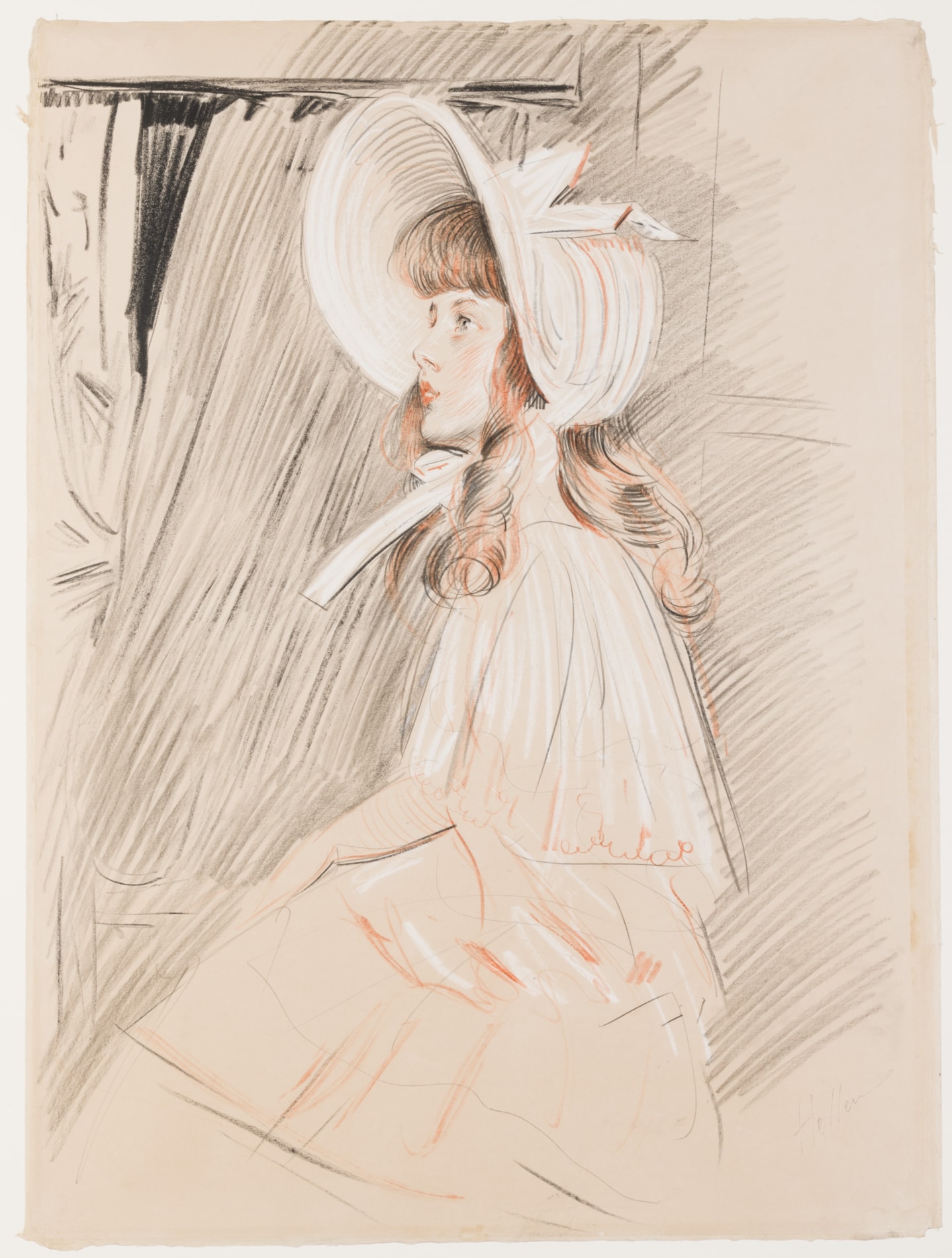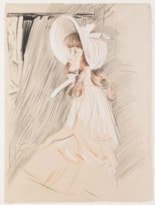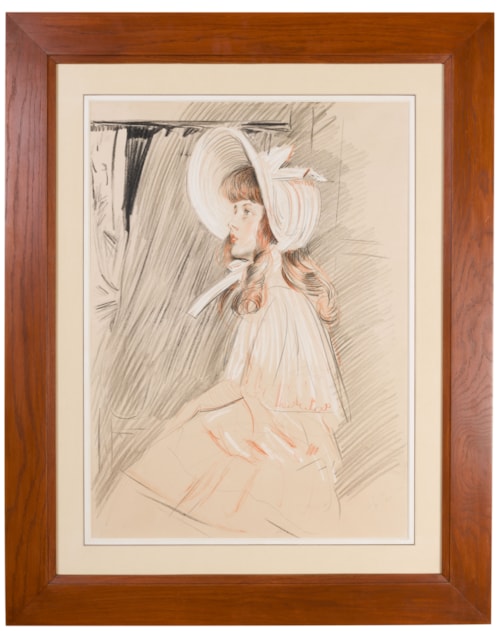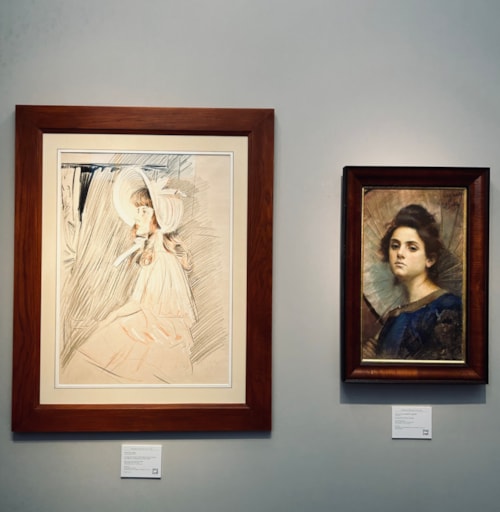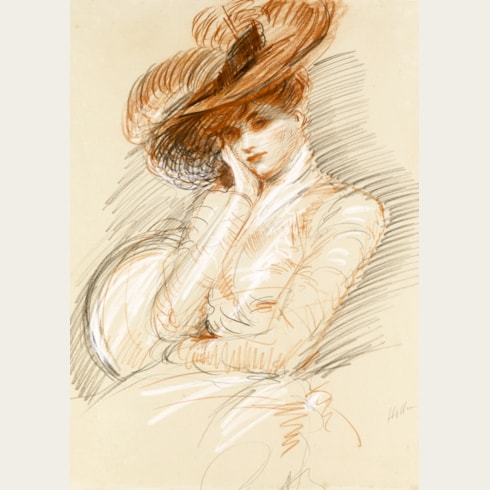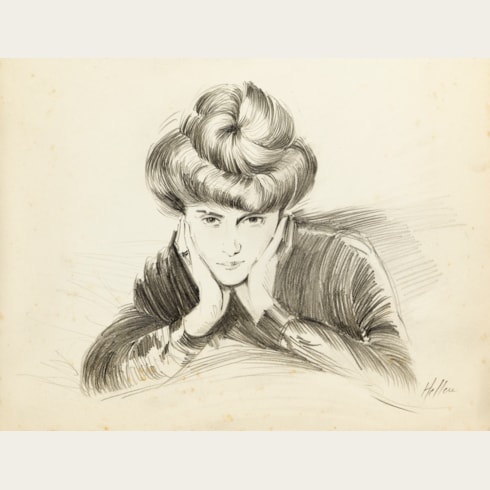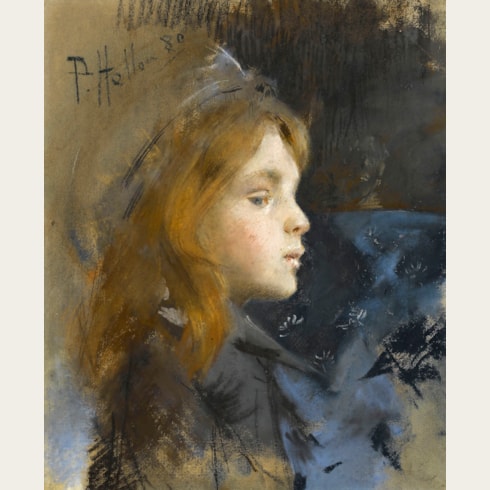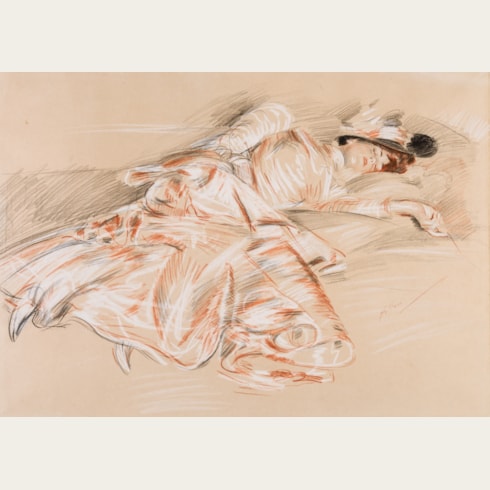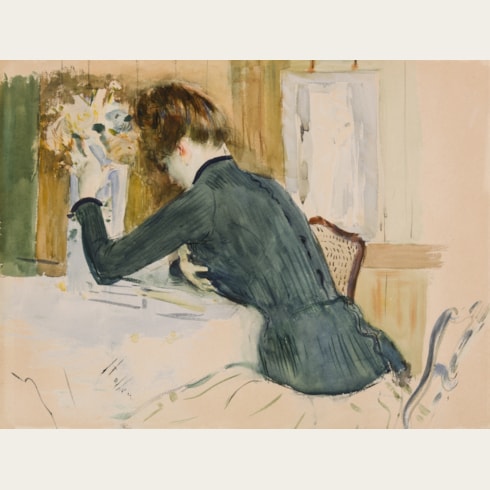Paul César HELLEU
(Vannes 1859 - Paris 1927)
A Young Girl Looking Up to the Left (Fermez les rideaux, from Chansons simplettes pour les petits enfants)
Signed Helleu in pencil at the lower right.
763 x 565 mm. (30 x 22 1/4 in.) [sheet]
This large sheet is one of a series of drawings used as illustrations to Chansons simplettes pour les petits enfants (‘Simple Songs for Small Children’), a book of nine songs or ‘little poems’ published by Lucie Faure-Goyau in 1906 and containing seven full-page illustrations of young girls drawn in trois crayons by Helleu. In the book, this drawing accompanied the song Fermez les rideaux (‘Close the Curtains’). As Robert de Montesquiou noted, in his 1913 book on Helleu, ‘Fermez les Rideaux…is a small masterpiece. In the evening, at her window, the child invincibly turns her eyes to the darkness that both attracts her and terrifies her, for… ‘At the top of the curtains is a heart. This dread black heart against pink curtains is terrifying…Between the curtains lo’ how night peers in like a prisoner from his cell.’’ The model for the present sheet may have been the artist’s elder daughter Ellen, born in 1887.
Two other drawings by Helleu for the Chansons simplettes pour les petits enfants are illustrated in a recent monograph on the artist.
The 1890s found Helleu and his young wife Alice popular figures in polite society in both France and England, with the artist receiving numerous portrait commissions and enjoying considerable financial success. He was a gifted portraitist, and was highly regarded for his portraits of the elegant women of the beau monde of Paris, London and New York. His subjects included the Comtesse Greffulhe, Queen Alexandra and Consuelo Vanderbilt, the Duchess of Marlborough. These works were greatly admired by his contemporaries; as Edmond de Goncourt noted in a letter to the artist, written in February 1895, ‘Your work has for its inspiration that dear model who fills all your compositions with her dainty elegance. It is sort of a monograph on Woman, in all the infinite varied attitudes of her intimate home life.’
Encouraged by his friend Sargent, Helleu began travelling to America in 1902, where his reputation had preceded him, and where he achieved much success as a portrait painter (despite apparently only knowing one word of English, namely the word ‘charming’). It was in 1912, on his second visit to New York, that he completed his most public work, the vaulted ceiling of the main hall of Grand Central Station, painted with the signs of the zodiac and the stars of the Milky Way. Helleu’s later reputation, however, has rested primarily on his etched work, executed in the medium of drypoint. First introduced to the etching medium by James Tissot, Helleu produced a large number of portraits of fashionable women in this manner, for which he charged up to 1,200 francs. The popularity of these prints has, however, tended to overshadow his less numerous oil paintings and pastels. In 1931, four years after Helleu’s death, a retrospective exhibition of his work was held at the Galerie Charpentier in Paris.
Provenance
Anonymous sale (‘De Caillebotte à Calder: Itinéraire d’une Passion’), Paris, Christie’s, 24 March 2021, lot 121.
Literature

